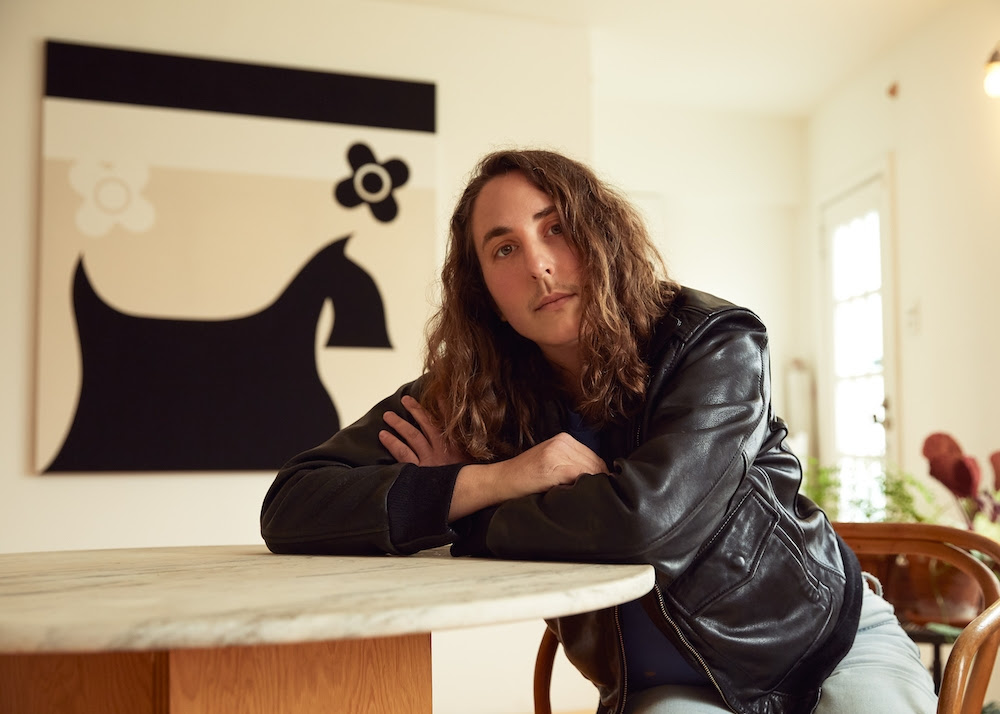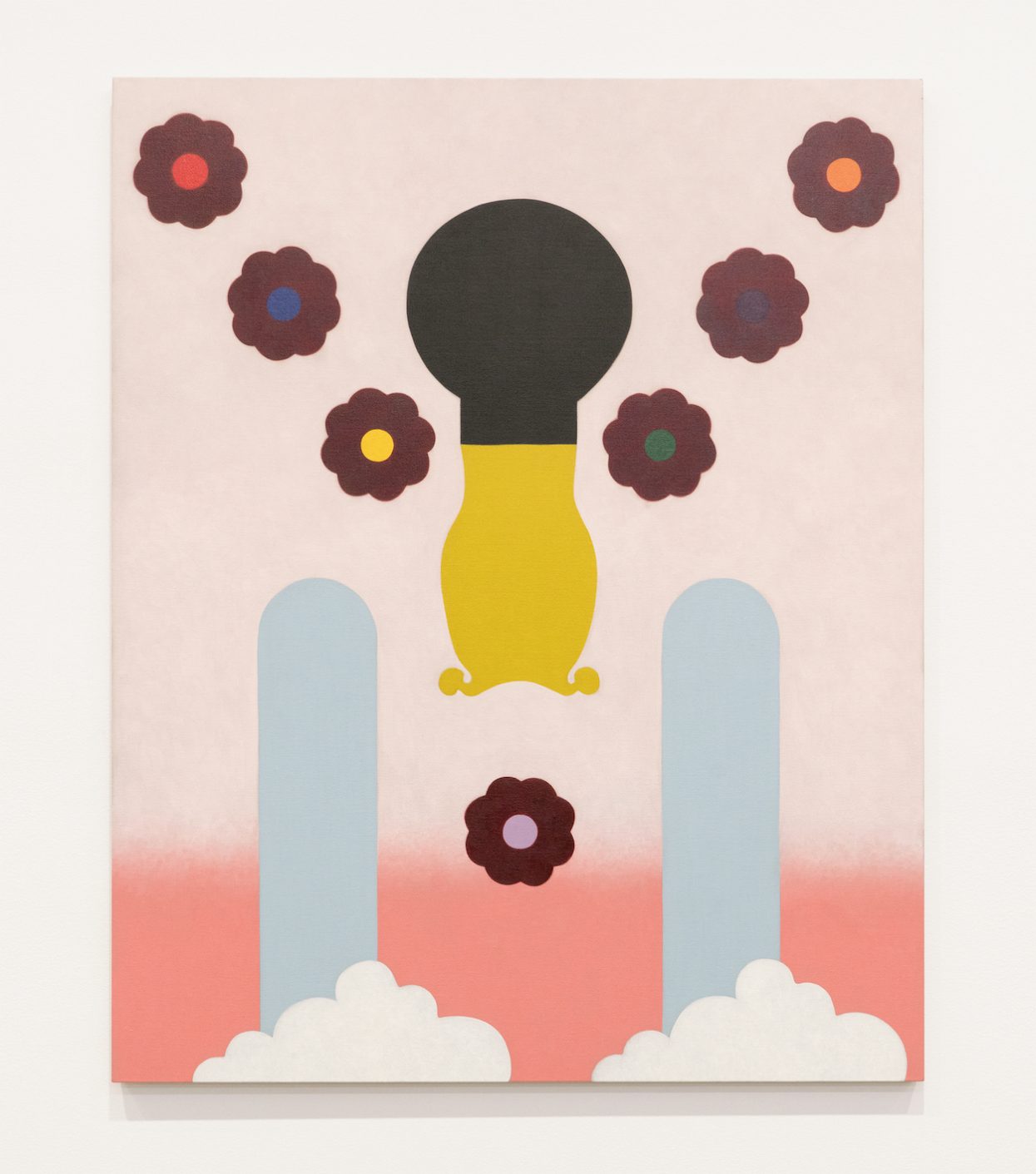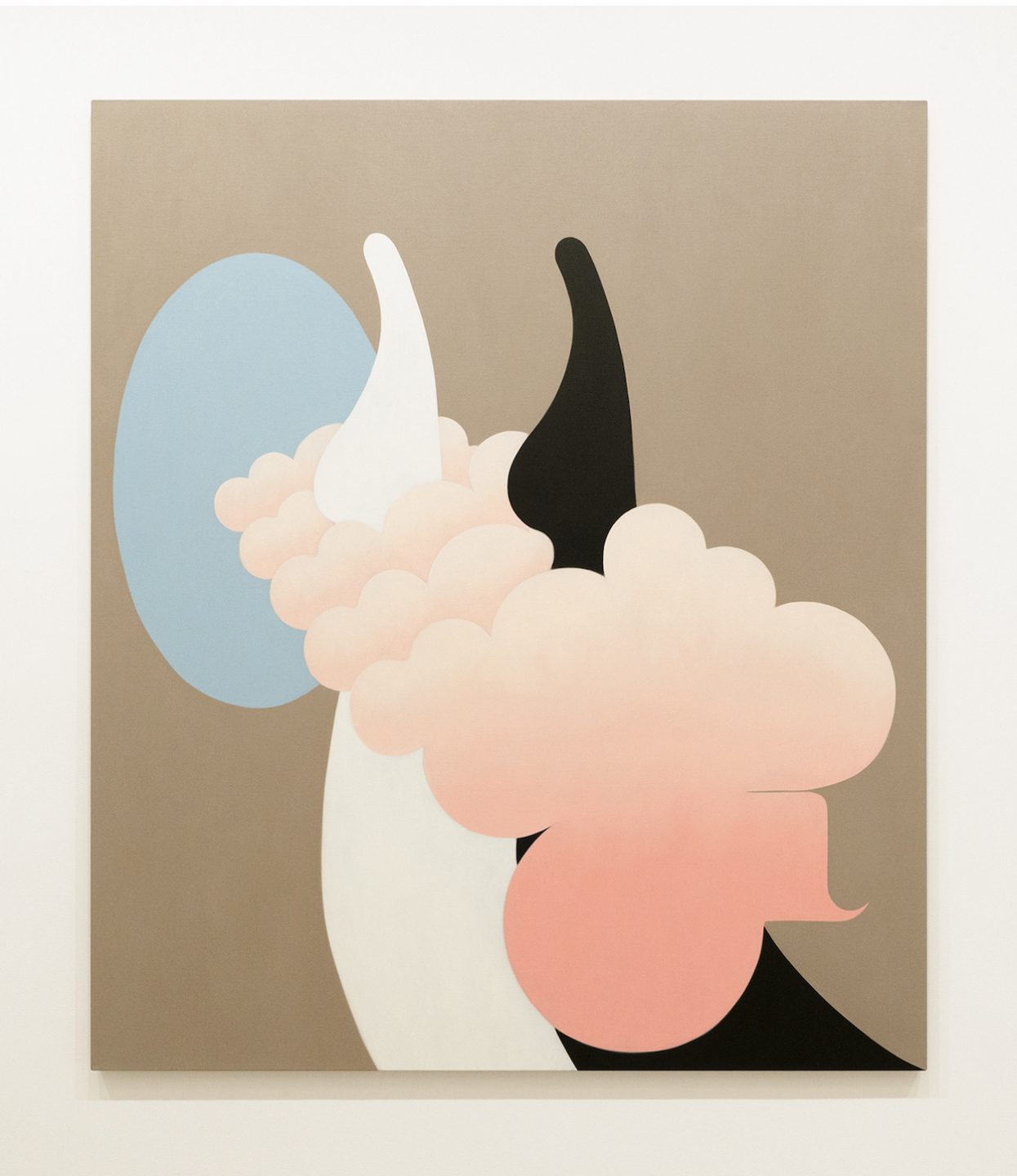Over the last dozen years, the Los Angeles painter Math Bass has developed their own visual lexicon, in which fragments of bodies and architecture swim around in fluid media and meanings. Solo exhibitions at the Hammer Museum, MoMA PS1, and the Jewish Museum have led to placements in the collections of the Yuz Museum in Shanghai and MOCA. This fall, they unveil a collection of work at New York’s Tanya Bonakdar Gallery. “Roses Are Red” sites inner-logic oil paintings within interventions like Chromosomal Wall, formed by interlocking Xs and Ys, or the undulating Full Body Parenthesis.
In the conversation below, which has been edited and condensed for clarity, Bass called mid-installation to talk about flatness, humiliation, and navigating binary options.
Let’s start at the beginning. Where did you grow up and start making art?
I was born in Queens and my family moved to Long Island when I was in elementary school. My earliest experiences of making art were centered around painting and printmaking. Then I went to Hampshire, and my primary focus was performance, sculpture, video installation, and drawing. Over the years, I navigated back to painting. I was always building backdrops, and part of that process had to do with painting. Flatness and repetition have been central to my work since I was a teenager.
What is it about flatness that appeals to you?
There’s something about the coincidence of images sharing a plane, oscillating between presence and absence—the way something can appear and disappear. I’ve always been interested in that. If you look at a greenscreen video, there’s a flat quality and a collapsing of information. It’s inherent to flatness. We collapse in order to expand. Or, once we expand to a certain degree, we start to collapse.
Was the recent move to using oil on linen connected to that?
The paintings I was making before were gouache, which is one of the flattest materials, almost anti-gravity flat. But I was jealous of my friends who painted with oil. I loved the way the material was imbued with time. At first, using oil was humiliating because it was so hard. It took a long time to figure out what the material does. It has a mind of its own that you have to tap into. Humiliation is the key word for the process. But now I’m in love with the material.
The lexicon I’ve been working with expanded in surprising ways when I applied oil to that language. I’ve been working with it for a decade. The actual symbols are open containers for meaning. It’s kind of phenomenological. When I feel like something has animated potential, or I feel like it’s moving, that’s when I know it’s working.
You work in the American Cement Building. How has that informed your sculptures?
It’s an iconic building recognizable by this X-shaped concrete exoskeleton. I was interested in inverting that experience and in transposing something from my studio into another space. I wanted to have two options for entering [the show] to create a fluidity of movement, a circularity. I also thought about binary options, you know, especially being a trans and queer person. There are so many binary bias structures in our society that you have to navigate.
Why “Roses Are Red” for the title?
I’m interested in cliché. We understand its basic structure, but there’s room for improvisation. There’s an overwrought romance in its overuse, the love poem of all time. It becomes flattened, too.
“Math Bass: Roses Are Red” will be on display at Tanya Bonakdar Gallery (521 West 21 Street, New York) until October 14.



